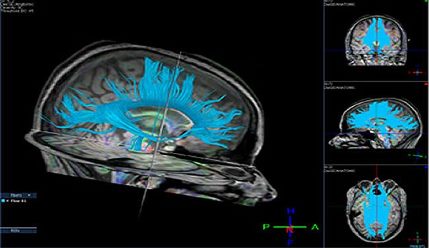Neuroimaging studies: In soccer, over one thousand “headers” per year can lead to brain injury and cognitive impairment
.
Study indicates there may be a heading threshold above which the risk for brain damage increases significantly: An Interview with Michael L. Lipton (Dana Foundation):
“Dr. Lipton pioneered the use of MRI technology to detect mild traumatic brain injuries (mTBI) from concussions. Such injuries, which may bring cognitive and behavioral impairment and even neurodegeneration later in life in some individuals, is increasingly seen as a major public health problem–in particular for those who play contact sports. According to the US Centers for Disease Control: “From 2001 to 2009, the number of annual TBI-related [emergency room] visits increased significantly, from 153,375 to 248,418, with the highest rates among males aged 10–19 years.”
With support from the Dana Foundation and the National Institutes of Health, Lipton has conducted neuroimaging studies on soccer players, who frequently jolt their brains by “heading” the ball. His goal is to understand better the relationship between head impacts and resulting brain damage and cognitive impairments.
…people who reported fewer than about 1,000 headers in the previous year generally stayed in the normal range on brain imaging and function tests. But those who exceeded 1,000 headers per year had on average a dramatic reduction in FA (Note: fractional anisotropy, a measure of neuronal health) as well as in cognitive performance. So this was at least a preliminary indication that there may be a threshold above which the risk for adverse effects on the brain goes up steeply—and that those who can keep below that level of exposure may be relatively safe…
And now we’re seeing evidence that multiple events like that, in quick succession, can have especially adverse effects. So the most important piece of advice for someone who has just been concussed is to avoid hits to the head again until he’s had time for a full recovery. But if he doesn’t recognize the first concussion, he won’t be careful to avoid the second one—he’ll go right back onto the field and run the risk of being hit again and again.”
To learn more:



